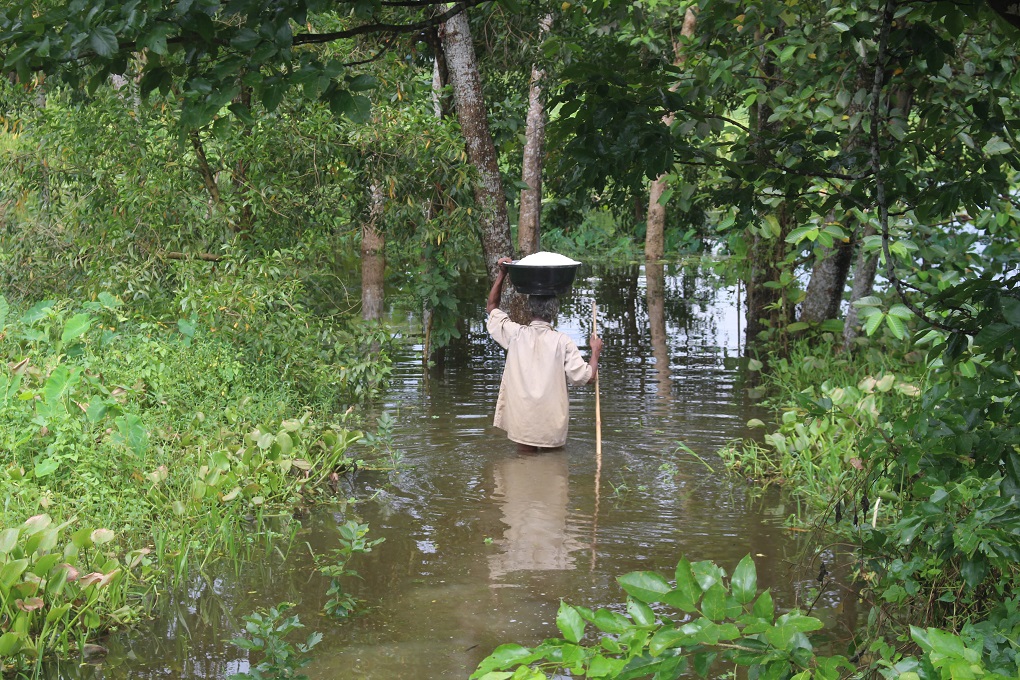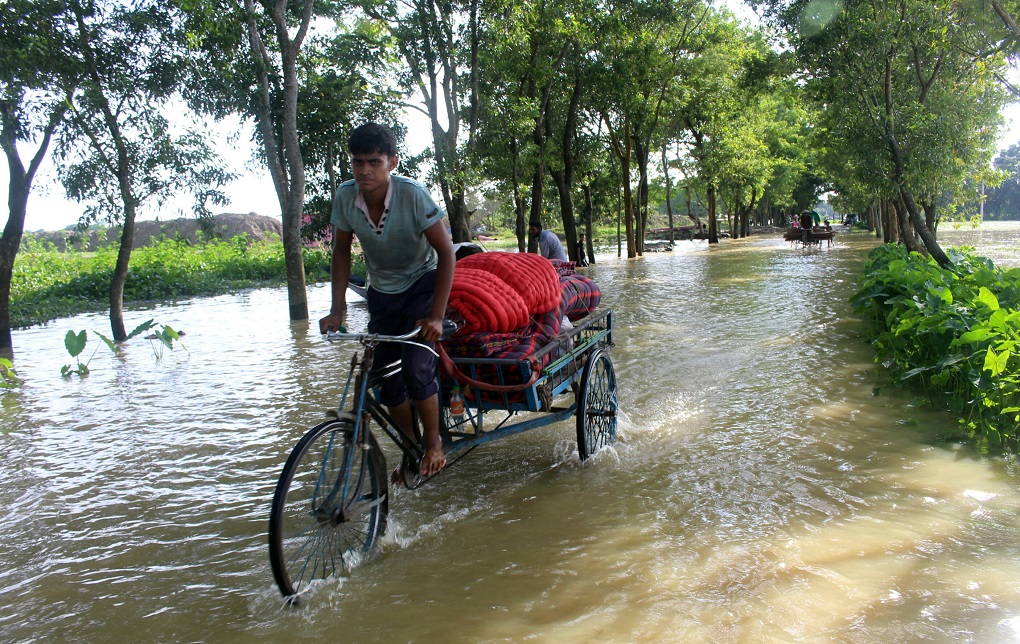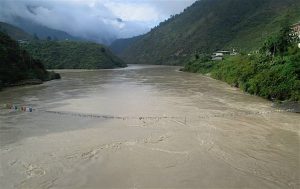As the monsoons begin, some parts of Bangladesh are already flooded, and the Brahmaputra and Ganga rivers are expected to burst their banks sooner rather than later. But the people of Bangladesh are now more aware of potential disasters, thanks to improved flood forecasting and monitoring systems.
“We made a forecast for the ongoing flood in the Surma-Kushiyara basin prior to June 30, and now we are forecasting that the water level in many points of Brahmaputra and Ganga might cross the danger level in the next three days,” said Sazzad Hossain, executive engineer at the Bangladesh Flood Forecasting and Warning Centre (FFWC).
Data from India and China
The projections made by the centre are based on data about water flow upstream in the Brahmaputra, Ganga, Teesta, Feni and Barak – all transboundary rivers flowing in from India. The data is provided by the Bangladesh Meteorological Department. More important, it is provided by meteorological offices in India and China, which gives the authorities more time to prepare, even evacuate the vulnerable residents if necessary.

People living in the Ganga-Brahmaputra-Meghna basin are used to floods during the monsoon season. Just last year, Bangladesh experienced a severe flood due to heavy monsoon rains in the Brahmaputra basin and in 2015, 200,000 hectares of Aman paddy and 50,000 hectares of vegetable fields were inundated with floodwater, according to the Department of Agricultural Extension (DAE).
Earlier flood this year
In early June this year, heavy rainfall in Bangladesh and the neighbouring Indian states of Assam and Meghalaya caused floods in some parts of the country. North-eastern Bangladesh was badly hit, with the Surma river in Sylhet district flowing 72 cm and 78 cm above the danger level at two points.
According to the Bangladesh Water Development Board, the ongoing flood has affected several hundred people in the districts of Sylhet, Sunamganj, Habiganj and Moulovibazar, where 280 schools have been closed and around 300,000 people have been cut off.

The DAE has made preparations to provide fresh Aman paddy seeds to farmers, in case crops are damaged by the floods.
“We have enough preparation to supply farmers Aman paddy seeds after the flood so that they can continue their cultivation,” Chaitanya Kumar Das, deputy director of the DAE, told thethirdpole.net.
“Considering the FFWC’s forecast, we have taken preparations including relief and rehabilitation mechanism to tackle the natural disaster,” Abu Saleh Mohammad Ferdous Khan, deputy commissioner of Kurigram district administration, told thethirdpole.net. “We get enough time to evacuate people living in low-lying areas near the rivers.”
Darkness under the lamp
Meanwhile in the Indian state of Assam over 1.25 million people have been affected by the floods, and at least 33 already reported killed. Major highways have been disrupted, and the famed Kaziranga national park, home of the one-horned rhinoceros, is mostly under water, with animals seeking higher ground.
It is unclear why, if Bangladesh is better prepared for floods at least partially due to information shared by India, Indian states do not seem to be. In the past the states of West Bengal and Assam have blamed lack of information from upstream riparians such as Bhutan and China. The floods are a regular catastrophe, occurring year on year with comparable amounts of people affected. And while it is argued that India and Bangladesh must work together to deal with transboundary floods, the challenges for India seem to be as much within than outside its borders.
![<p>Houses have been flooded in Moulvibazar, Bangladesh, and people are relocating [image by: Serajul Islam]</p>](https://dialogue.earth/content/uploads/2017/07/Moulvibazar.jpg)








